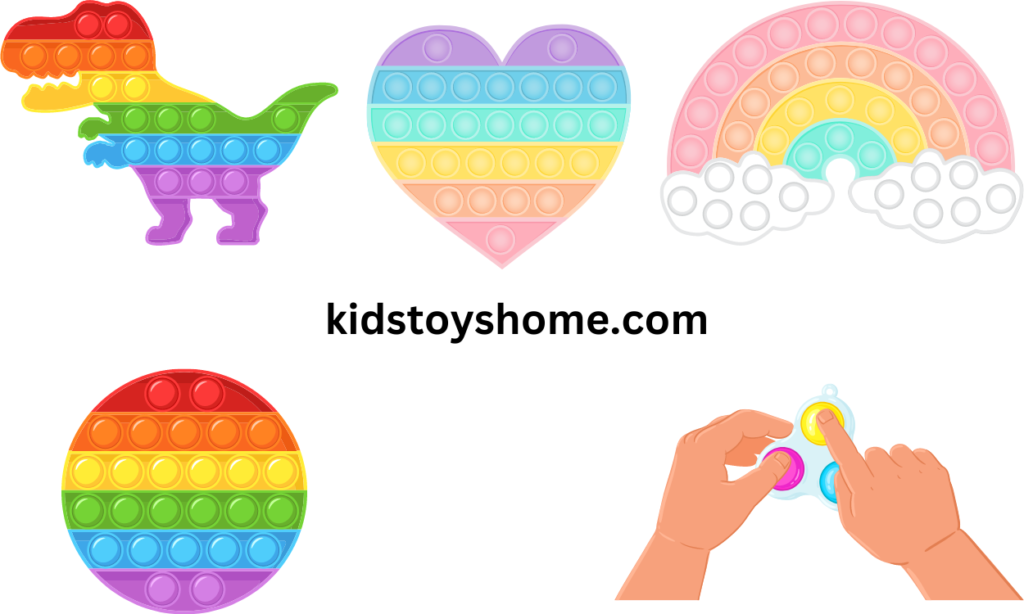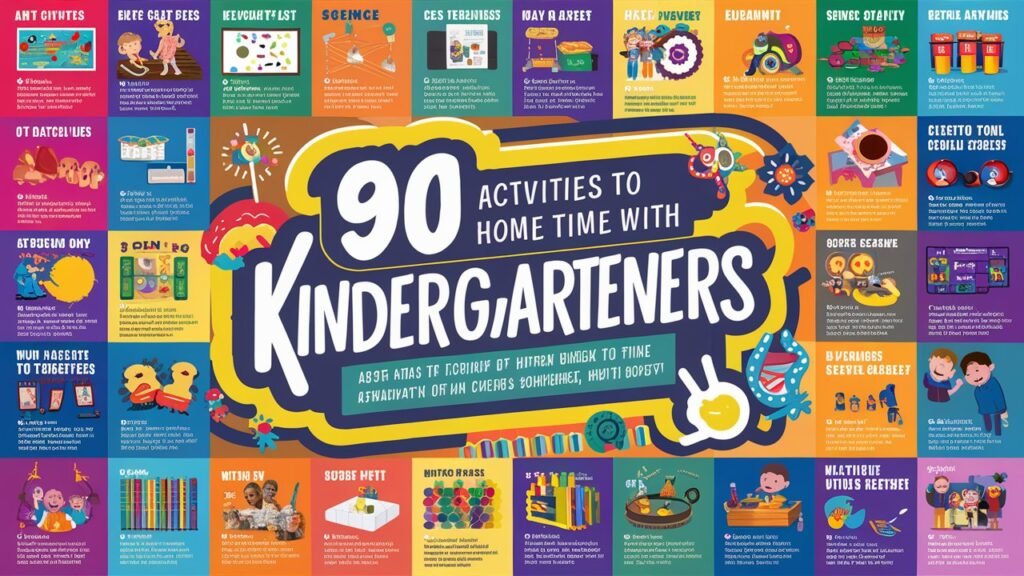In a world where children’s engagement with digital screens is rising at an unprecedented rate, there’s a growing concern about the deficit in tactile, hands-on experiences that are crucial for child development. Sensory play, which involves engaging the senses to reinforce learning, has traditionally filled this gap, but the increasing allure of glowing devices has made this essential aspect of growth harder to incorporate into daily routines.
Enter the bubble pop-up toys—the latest craze in sensory play that is captivating the interest of children, parents, and educators alike. These innovative toys not only offer a compelling alternative to electronic entertainment but also encourage vital sensory feedback and fine motor skill development within just a few moments of interaction.
Continue reading to explore how these simple yet fascinating toys are revolutionizing sensory play, providing a multitude of developmental advantages while keeping children both entertained and educationally stimulated. Discover why bubble pop up toys are not just a passing trend but a key to unlocking a new horizon in sensory-based learning.
The Rise of Bubble Pop-Up Toys
In recent years, an unassuming yet vibrant plaything has emerged on the landscape of children’s toys, capturing the hearts and imaginations of kids across the globe. Bubble pop-up toys, with their simple design and irresistible pop, cater to the innate human love for tactile sensation. Their sudden leap into the limelight is not a fad but aligns with a growing recognition of sensory play’s significance in early childhood development.
What started as a niche interest has burgeoned into a full-fledged trend, as bubble pop-up toys begin to adorn the shelves of toy stores and classrooms alike. They resonate not just with children but also with adults, riding the wave of popularity backed by an increasing presence on social media platforms and word-of-mouth recommendations. This surge reflects a broader movement towards sensory-based activities that promote learning through exploration and touch.
As bubble pop-up toys gain prominence, it’s valuable to delve into their developmental benefits, explore how they compare and contrast with traditional sensory toys, and analyze the feedback from their diverse user base. The following sections will unpack the multi-faceted appeal of these innovative toys and shed light on why they are quickly becoming essential tools in nurturing young minds.
What are Bubble Pop-Up Toys?
Bubble pop-up toys, also known as sensory fidget toys, are the latest innovation designed to satisfy tactile cravings through repetitive popping motions that emulate the sensation of popping bubble wrap. These toys are usually made from soft, pliable silicone and feature rows of “bubbles” that can be flipped and popped back and forth, providing not only an auditory and tactile experience but also an outlet for restless fingers.
Historical Context and Recent Surge in Popularity
Historically, sensory toys have been used therapeutically for individuals with sensory processing challenges for several decades. However, it wasn’t until recent years that these toys were in mainstream culture. Combining their soothing effects with the satisfying pop has catapulted bubble pop-up toys into the limelight, making them a favorite among people of all ages. The recent global challenges that have increased stress and anxiety for many have further amplified their popularity, becoming a household staple for stress relief and sensory exploration.

Developmental Advantages
The developmental benefits of these toys are numerous. For children, they serve as a playful tool to enhance cognitive skills, including pattern recognition and logical thinking, as they engage in the cause-and-effect aspect of the toy. They also strengthen fine motor skills and dexterity as kids grasp and manipulate the bubbles. Furthermore, the rhythmic nature of the pop and reset cycle is calming, aiding in emotional regulation, and providing a form of stress relief that is beneficial not just for children but also for adults.
Cognitive skill enhancement through sensory stimulation
In today’s fast-paced world, children’s toys are not only meant for play but also for fostering crucial developmental skills. Cognitive skill enhancement through sensory stimulation is a key area that bubble pop-up toys target. They provide a multi-sensory experience that challenges the brain and promotes problem-solving and decision-making abilities. Engaging with these toys can significantly boost a child’s sensory processing capabilities, leading to heightened awareness and learning.
Fine motor skill development
Additionally, bubble pop-up toys superiorly address fine motor skill development. As children press and manipulate the bubbles, they refine their dexterity and hand-eye coordination, which are foundational skills necessary for writing, buttoning clothes, and other daily tasks.

Beyond physical and cognitive benefits, these toys play a role in stress relief and implications for emotional regulation. The simple act of popping can serve as a calming activity, reducing anxiety and assisting with mood regulation, making it an invaluable tool for both playtime and therapeutic settings.
Stress relief and implications for emotional regulation
When comparing bubble pop-up toys vs. traditional sensory toys, it becomes evident that bubble pop-up toys may offer a more engaging, durable, and hygienic option, often drawing the preference of parents and educators alike. Their simplicity and the satisfying tactile feedback they provide set them apart as a modern twist on sensory play.
Moving forward in the document, we will delve deeper into the user experience and feedback, followed by discussions on accessibility, inclusivity, and an honest look at challenges and limitations surrounding these innovative toys.
Bubble Pop-Up Toys vs. Traditional Sensory Toys
| Bubble Pop Up Toys | Traditional Sensory Toys |
| Bubble Pop-up Toys | On the other hand, conventional sensory toys come in a myriad of forms, from textured balls and squishy toys to complex fidget gadgets. These toys typically necessitate a variety of interactions, such as squeezing, twisting, or assembling parts, which can target a wider range of sensory feedback and motor skills development. The differences in design, usage, and targeted areas of development make for a compelling comparison, often influenced by the preferences and specific needs of users, including educators and therapists who cater to children with differing sensory processing requirements. |
Parent and Educator Preferences
When it comes to parent and educator preferences, the choice between bubble pop-up toys and traditional sensory toys may hinge on the desired outcome. Parents may gravitate towards bubble pop-up toys for their convenience, ease of cleaning, and the calmative effect they can have on children, especially those with anxiety or attention disorders. Educators might prefer traditional sensory toys in a classroom setting for their educational versatility and the ability to engage children in group activities. Both see value in toys that are inclusive and cater to various developmental stages and abilities, ensuring that all children can benefit from sensory play.

Comparing Functions and Benefits
Bubble pop-up toys and traditional sensory toys serve the fundamental purpose of stimulating a child’s senses but do so through different mechanisms and experiences. Bubble pop-up toys, often made of silicone, provide a tactile and auditory experience as children push down the bubbles to hear a satisfying ‘pop’. This act not only entertains but also encourages fine motor skills and sensory exploration. Traditional sensory toys may involve a variety of textures, shapes, and activities that can include anything from squishy balls to sensory bins filled with grains. While bubble pop-up toys focus on repetitive sensory input, traditional toys often offer a wider range of textures and sensory experiences which can be more stimulating for sensory processing.
Accessibility and Inclusivity
One of the remarkable aspects of bubble pop-up toys is their accessibility. These toys are generally affordable, allowing families from a wide range of socioeconomic backgrounds to incorporate them into their children’s playtime. The availability of these toys in various shapes, sizes, and colors also contributes to their widespread appeal. Additionally, bubble pop-up toys resonate with the principles of inclusivity, as they cater to children across the spectrum, including those with special needs. The tactile nature of the toys can be particularly beneficial to children with autism, ADHD, and sensory processing disorders, offering a form of sensory stimulation that can be both calming and conducive to focus.
Affordability and Availability
One of the key reasons bubble pop-up toys have become so widespread in the sensory play market is their affordability and widespread availability. These toys are often priced modestly, making them accessible to a wide economic range of families and educational institutions. Moreover, the simplicity of their design not only makes them cost-effective but also allows for mass production, ensuring they are aplenty in toy stores, online marketplaces, and specialty educational resources. This accessibility promotes inclusivity, allowing children from various socioeconomic backgrounds to enjoy and benefit from the sensory experiences these toys provide.
Conclusion
In conclusion, bubble pop-up toys have emerged as a leading tool in sensory play, captivating the interest of children, parents, and educators alike. The toys’ simplicity, coupled with their effectiveness in enhancing cognitive and fine motor skills, makes them an appealing choice in today’s fast-paced world. They not only offer therapeutic benefits such as stress relief and emotional regulation but also engage children in a form of play that is inclusive and accessible.
FAQs
What makes bubble pop-up toys so popular?
Bubble pop-up toys have captured the hearts of both children and adults alike due to their simple yet satisfying mechanism. The act of popping the bubbles provides immediate sensory feedback through sound and touch, which can be calming and help reduce stress and anxiety. Furthermore, these toys are portable, durable, and come in various shapes and colors, appealing to a wide age range and personal preferences.
Are these toys beneficial for children’s development?
Yes, bubble pop-up toys are more than just a source of entertainment. They are recognized for their developmental benefits, particularly for children. Playing with these toys can enhance fine motor skills, hand-eye coordination, and sensory exploration. They also encourage cognitive development by promoting problem-solving and planning skills as children engage in imaginative play.
Can adults benefit from using bubble pop-up toys?
Absolutely. Aside from being a fun, stress-relieving activity, bubble pop-up toys can serve as a mindfulness tool for adults. The repetitive action of popping can help redirect focus from stressors to the present moment, aiding in anxiety management. Additionally, they can be a discreet fidget tool for improving concentration during work or meetings.





